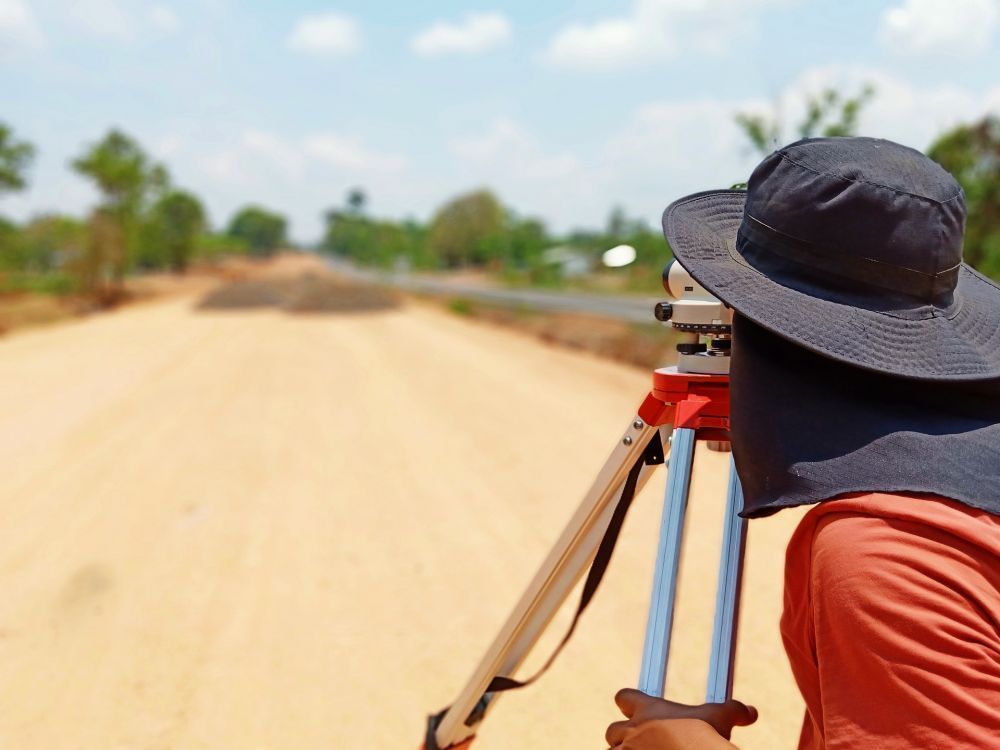
The Ultimate Guide to Installing a Fence on a Slope
If you’re not a fence pro, you might be surprised at just how complicated fences really are. Most people find that while they think it’s “just a fence” before they get started, there’s a lot more to learn than they thought.
One of the most challenging things you can do with a fence is install a fence on a slope. So, if you have a sloped site and you want to know the right way to install a fence on a slope, read on. This is our ultimate guide to installing a fence on a slope.
Know Your Gradient
The first thing you need to establish when you need to install a fence on a slope is what the gradient of the slope is. This is another way to say the angle of the slope.
In some cases, there may already be a survey of the site available, but in others, you might need to measure the gradient of the slope yourself. There are several ways to do this, but the easiest is to use land surveying equipment.
If you have a large site, you might have different slopes with different gradients. In that case, it’s useful to mark the site layout with the various gradients you need to accommodate. Mark the direction of the slope with an arrow on your plans so you know which direction the fall of the slope is.
Understand How Slopes Affect Fence Length
In most cases, when a fence company quotes for a job that includes a fence on a slope, they will measure the fence lines directly off the site layout. However, if there are a lot of steep slopes on the site, you might end up paying more for your fence, and that’s all because of Pythagoras.
When a fence is installed on a slope, it is longer when measured along the slope than from above. Which means that you might have to pay for extra feet or meters of fence if your fence is remeasurable based on the terms of the quote.
Choose the Right Fence
The next thing you need to know about installing a fence on a slope is that the type of fence matters.
Chain link fence or diamond mesh fence as it is called in some parts of the world can usually follow the contours of the ground pretty well. It is a flexible, woven fabric that is almost like fabric, so it can be installed on slopes fairly easily.
Other fence types, however, aren’t so easy.
Welded mesh, for instance, is rigid, so there’s a lot of cutting and shaping involved in installing it on slopes.
Panel fences too can be a problem. If the panels are fully welded, they can’t be installed on slopes, however, some kinds of ornamental fence and palisade fence can be raked to follow a slope.
In some cases, fence companies that manufacture their own ornamental or bar fence panels can manufacture them to suit the various slopes on a site. This does take a lot more work though, and will usually affect the cost of the fence.
Use Average Gradients
Even if you measure the gradient on your site, you will probably notice when installing a fence on a slope that it’s not entirely a smooth, even slope all the way from the top to the bottom.
However, installing fences to suit the slope at each section will result in a fence line that is not aesthetically pleasing.
So it’s best to divide each fence line into sections of 50 or 100 meters, and base your installation on the average gradient over that distance. This will make for an evenly sloped fence that will look a lot better!
Stepping Versus Raking
When it comes to installing a fence on a slope, you have two basic options: stepping the fnece, which is when each panel drops by a certain amount, but the top of the fence remains level, and raking the fence to follow the ground.
 |
|
Fence installed to follow ground
|
 |
|
Stepped fence
|
Which one you choose will depend on the slope and the type of fence, as well as other factors like whether you need to keep the bottom of the fence secured too.
Often, when fences are stepped, fence posts are installed closer together to create shorter panels and limit the openings under the fence. Posts are usually also longer, so that they can carry the fence above and below.
Closing Gaps Under Fences
If you are installing a fence on a slope and you don’t want to have any openings under the fence, there are a few options you could consider.
One would be to tie a section of mesh in a co-ordinating color along the bottom of the fence line, following the ground to close up the openings.
Another option is to install custom panels under the fence panels to close gaps. Or you could use natural materials like rocks from your site or a concrete beam to create a barrier along the bottom of the fence.
Fences On Slopes Cost More
One of the most important things you need to know is that it will almost always cost more to install a fence on a slope than on flat ground.
There is usually extra material required, and it's a lot more difficult to do, so labour costs will be higher too.
If you can move your fence line to avoid very steep slopes, it might be worth considering that if you want to save money on your fence install.
Installing Gates on a Slope
Generally, it’s not a good idea to install a gate on a slope, but sometimes, it can’t be helped.
If you need to install a gate on a slope, be sure to talk to an experienced fence company that can advise you about your options.
Sometimes, swing gates can be made to accommodate slopes, or you might be able to install a rolling or sliding gate.
If there are slopes next to the gate, but the gate area itself is flat, you might be able to install longer posts to solve the problem.
A Job for the Pros
There are some fence projects that can be tackled by people who are not professional fencers, but fences on slopes usually don’t fall into that category.
If you have a challenging site that has a lot of slopes and gradients, it’s always a good idea to get a professional to install your fence. You’ll get better results and a much more secure and stable fence.

